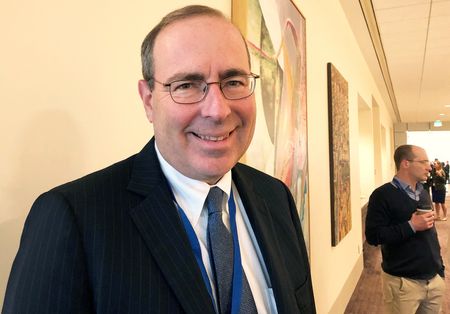
(Reuters) – The Federal Reserve for now still needs to prioritize quashing inflation over risks to U.S. economic growth its steep run up in interest rates may cause, but its policy path depends on incoming economic data, Richmond Fed President Thomas Barkin said on Tuesday.
Asked if it was still the case that the U.S. central bank risked doing too little rather than too much, Barkin told Bloomberg TV in an interview, “It is for me… it feels to me like the risk is on the inflation side at this point rather than the economy side.”
The Fed’s policy rate is currently in a 4.50%-4.75% range while a key U.S. government report earlier on Tuesday showed consumer prices accelerated in January but the annual increase continued to slowly abate.
“It’s about as expected,” Barkin said of the report as he cautioned that it will take a while for inflation to get back down near the Fed’s 2% goal. By the Fed’s preferred measure, inflation is still running at a 5.0% annual rate.
“Inflation is normalizing but it’s coming down slowly,” Barkin said. “I just think there’s gonna be a lot more inertia, a lot more persistence to inflation than maybe we’d all want.”
The Fed is seen raising its policy rate at least twice more to the 5%-5.25% range, with financial markets retaining about even odds for a further quarter-point hike in the summer.
Barkin, who declined to offer his own assessment of where rates will peak, noted that the eventual path will be dictated by a raft of economic data over the next few months, especially monthly employment and inflation reports.
“If inflation settles, maybe we don’t go quite as far but if inflation persists at levels far above our target then maybe we’ll have to do more,” he said.
(Reporting by Lindsay Dunsmuir; Editing by Chizu Nomiyama)

